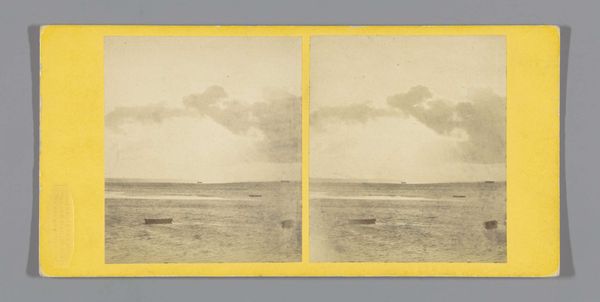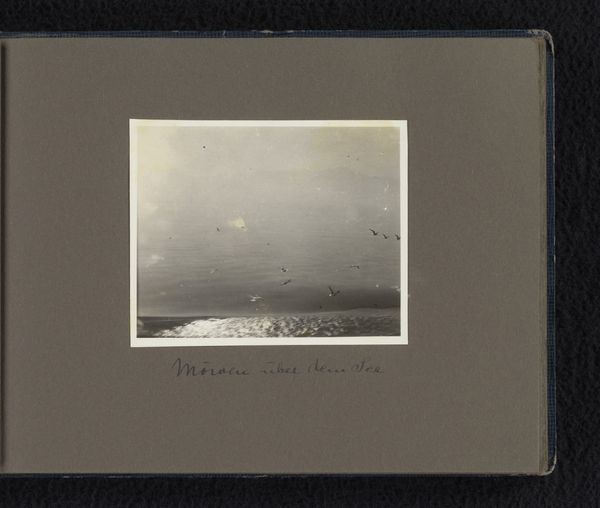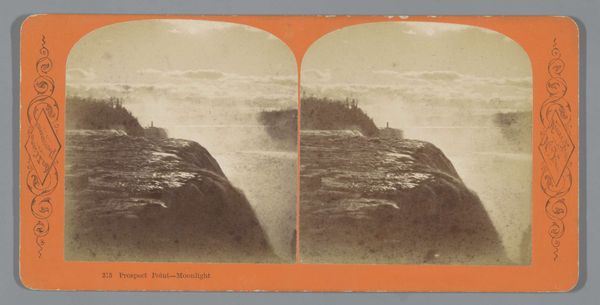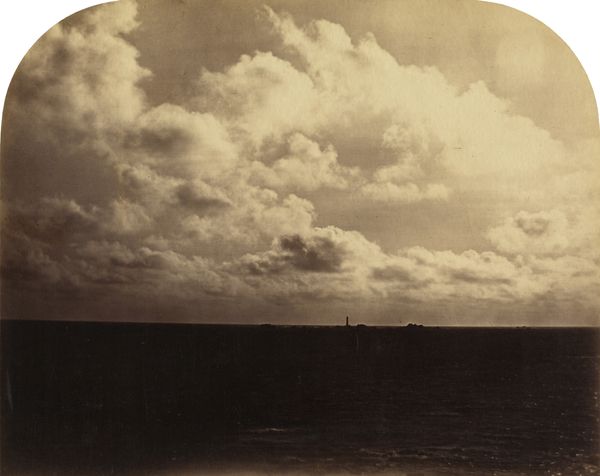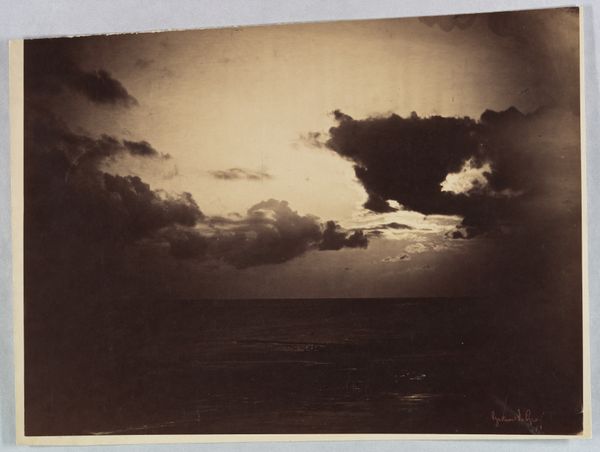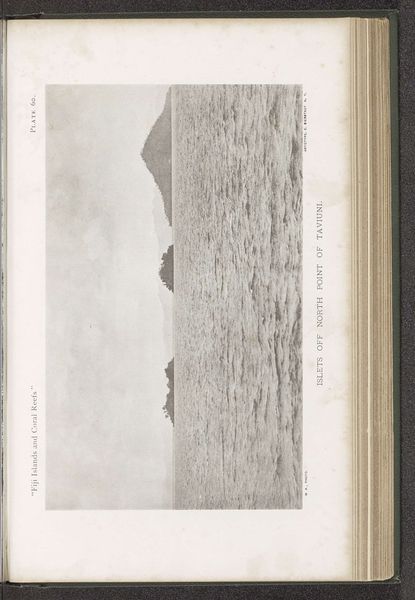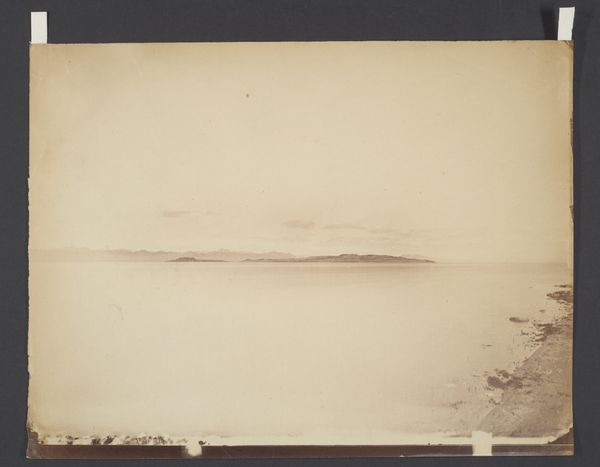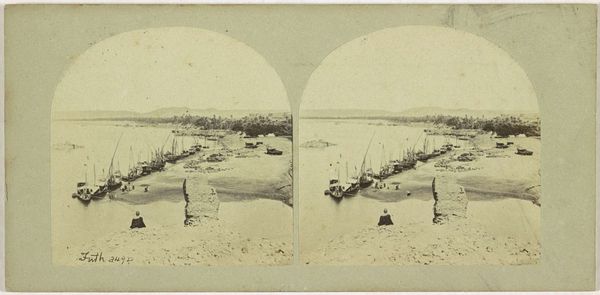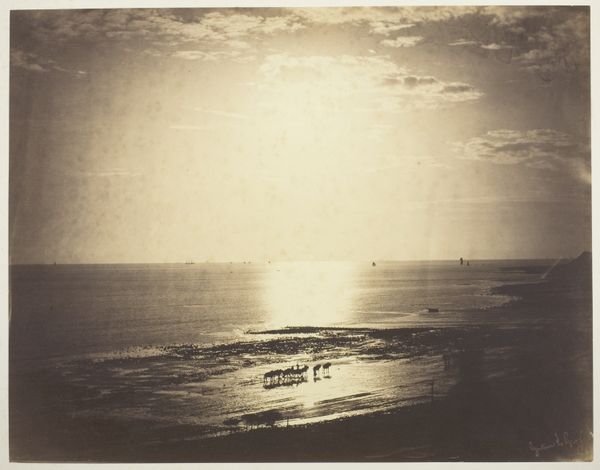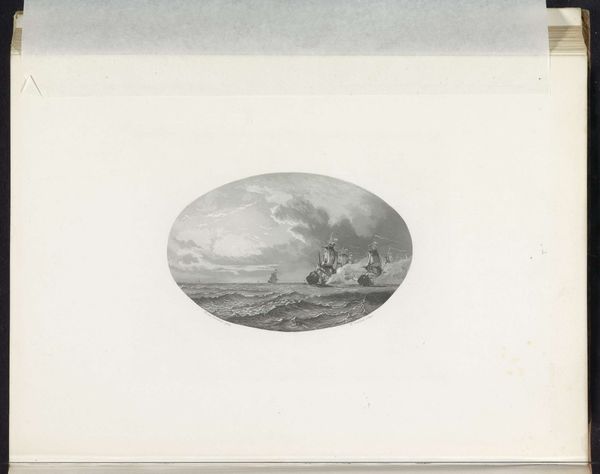
photography, gelatin-silver-print
#
water colours
#
landscape
#
pastel colours
#
photography
#
orientalism
#
gelatin-silver-print
Dimensions: height 86 mm, width 175 mm
Copyright: Rijks Museum: Open Domain
This stereograph by George E. Curtis captures a moonlit scene of the Niagara River. It was produced by creating two nearly identical photographic images, mounted side-by-side to create a three-dimensional effect when viewed through a stereoscope. Stereography was a popular form of entertainment in the late 19th century. These images were mass-produced, catering to a public eager to experience distant places and scenes from the comfort of their homes. The process involved a complex interplay of chemistry and optics, requiring skilled technicians to prepare the photographic plates and operate the cameras. The Niagara River was a popular subject, emblematic of the sublime power of nature. The stereograph format amplified this effect, immersing the viewer in the scene. These commercially produced images blur the lines between art, science, and mass culture. Examining them allows us to appreciate the artistry involved in their production, and the broader social and economic forces that drove their popularity.
Comments
No comments
Be the first to comment and join the conversation on the ultimate creative platform.
